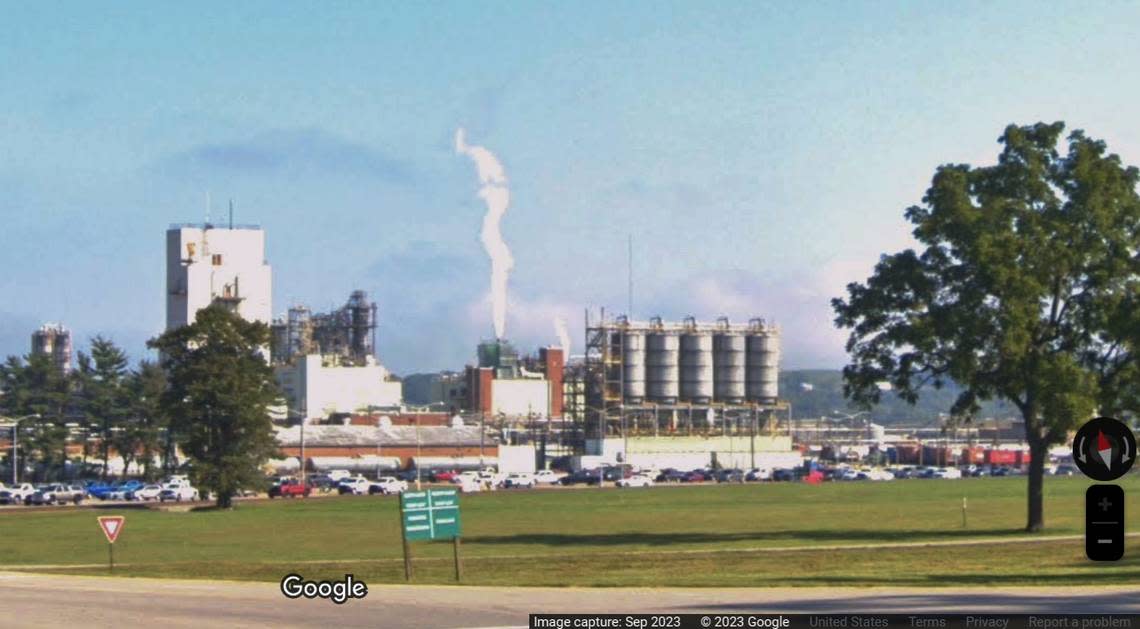Americans exposed to dangerous ‘forever chemical’ for 60 years, suit says. Factory fined

A company accused of knowingly exposing Americans to dangerous chemicals for more than 60 years will have to pay millions after a five-year lawsuit was settled.
DuPont, a manufacturing plant that produced Teflon products from the 1950s to 2013, settled with the state of Ohio for $110 million, according to a news release from the Ohio Attorney General’s Office.
“This settlement has been a long time coming,” Ohio Attorney General Dave Yost said in the release.
McClatchy News reached out to DuPont for comment Nov. 30 but did not receive an immediate response.
The lawsuit, obtained by The Columbus Dispatch, said DuPont “caused widespread PFOA contamination in Ohio as a result of decades-long intentional releases of massive amounts of PFOA into the environment.”
Perfluorooctanoic acid, also called PFOA, is “a group of chemicals used to make fluoropolymer coatings and products that resist heat, oil, stains, grease, and water,” according to the Centers for Disease Control and Prevention.
The chemical group has been linked to various health issues, including kidney and testicular cancer, thyroid disease, low birth weight and high cholesterol, officials said.
The lawsuit said DuPont admitted to discharging the chemical into the environment from its Washington Works manufacturing facility, which is located directly across the Ohio River in Parkersburg, West Virginia.
A 2017 University of Cincinnati study confirmed residents of the Mid-Ohio River Valley had elevated levels of PFOA in blood samples between 1991 and 2012. The study was done along both sides of the Ohio River in parts of West Virginia, Kentucky, Ohio and Indiana, the lawsuit said.
“(DuPont) did this despite knowing the release of the chemicals posed a danger to the public,” Gov. Mike DeWine said at a news conference, The Columbus Dispatch reported.
Studies show PFOAs are found in the blood of 99.7% of Americans, from various exposures.
PFOAs have been called “forever chemicals” because “they break down very slowly,” the U.S. Geological Survey reported.
The chemicals are known to be toxic and carcinogenic in animals as well, officials said. It’s “remarkably persistent in water and soil, resisting typical environmental degradation processes,” according to the Attorney General’s Office.
The chemical, also referred to as C8, was purchased in large quantities by DuPont beginning in 1951, until DuPont began manufacturing it itself in 2001, the lawsuit said.
The suit said DuPont was made aware of the exposure and dangers of the chemicals numerous times over the decades but failed to report the data or make changes. Pages
In 1981, DuPont conducted a plant pregnancy study on workers who were pregnant or had recently given birth. Blood samples were taken from the women participating in the study. Among the seven children born by the time of the study, two of them had birth defects in their eyes or facial area, the lawsuit said.
“The results showed that the women had significantly elevated levels of PFOA in their blood, and umbilical cord blood from at least one of the babies was tested and found to contain PFOA,” the lawsuit said.
The Chemours Company, once a part of DuPont until it branched off in 2015, according to officials, was also listed as a defendant in the lawsuit.
McClatchy News reached out to the Chemours Company Nov. 30 but the company did not wish to comment.
The Columbus Dispatch reported the Chemours Company will be responsible for paying back half of the $110 million settlement amount. DuPont will pay $39 million, and a third company, Corteva, which was also once part of DuPont, will pay $16 million, according to the news outlet.
“The agreement also advances additional obligations and assurances allowing Ohio to continue to protect its people and drinking water,” the Attorney General’s Office said.
DuPont and Chemours “agreed to pay $670 million to settle thousands of personal injury lawsuits citing health problems” from the company’s use of PFOA, officials said.
Thousands exposed to cancer-causing chemical in Louisiana, feds say. What’s chloroprene?
Creek suddenly turns bright green in Pennsylvania, photos show. What caused the glow?
‘Extremely toxic chemical’ found in many products may be banned by EPA. What is TCE?

